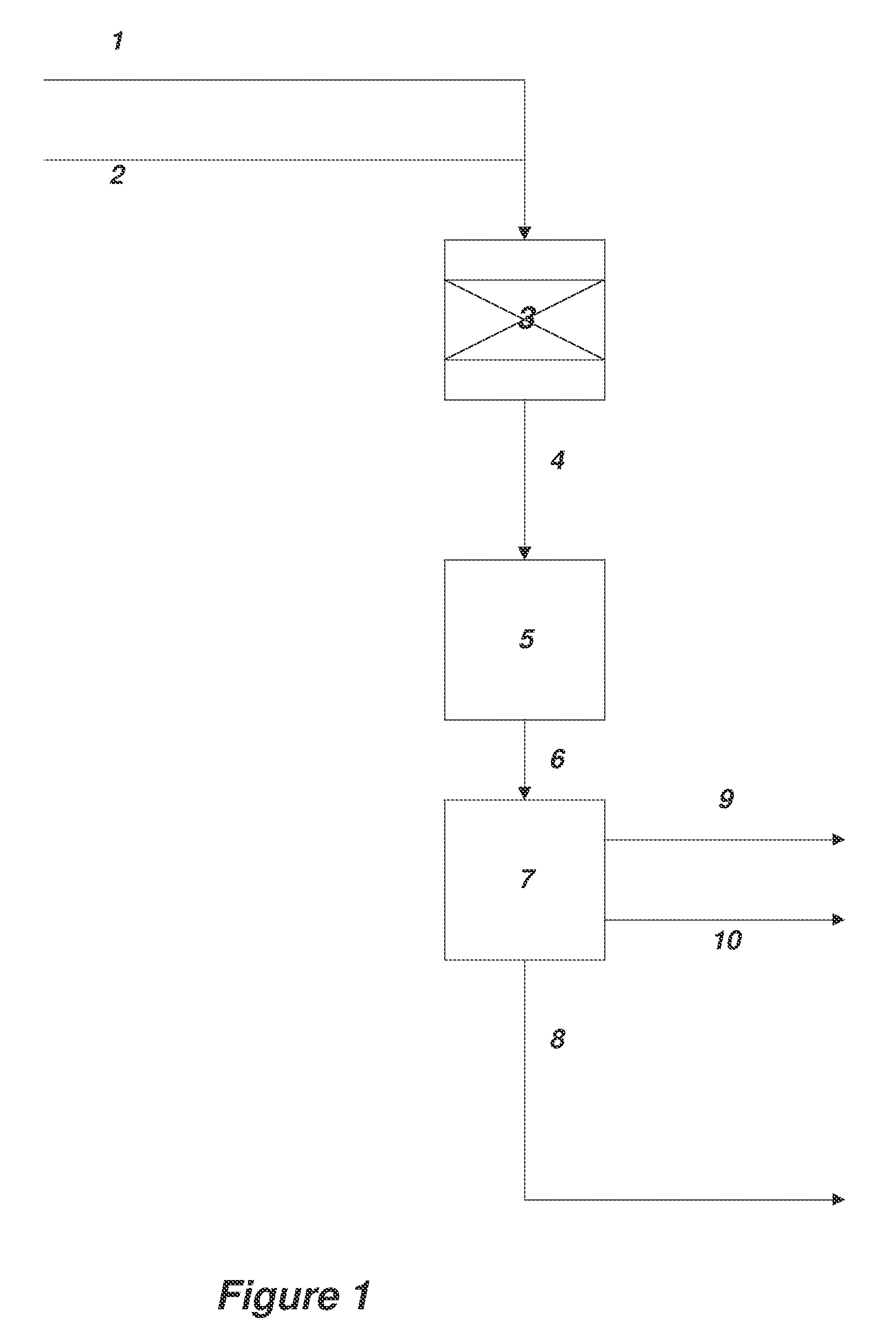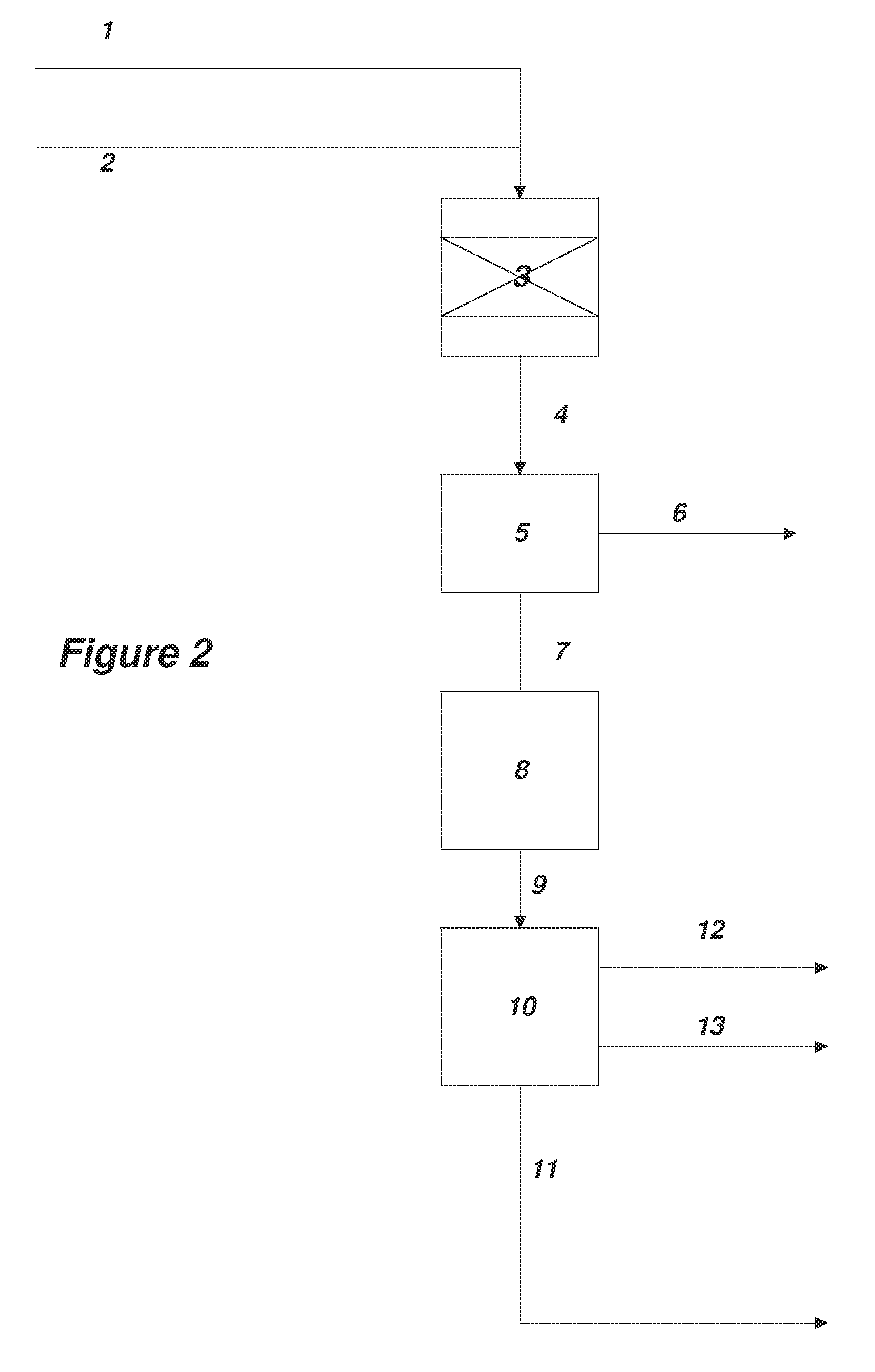Process for production of acrylates from epoxides
a technology of acrylates and epoxides, applied in the field of chemical synthesis, can solve the problems of high interest and reactive chemical intermediates, price fluctuations, and difficulty in handling and transporting toxic chemicals, and achieve the effect of avoiding isolation and storage, and avoiding hazards and costs
- Summary
- Abstract
- Description
- Claims
- Application Information
AI Technical Summary
Benefits of technology
Problems solved by technology
Method used
Image
Examples
specific integrated embodiments
[0163]Combining concepts and details described above, the present invention encompasses the following methods:
[0164]A method for the synthesis of acrylic acid comprising the steps of:[0165]1) providing a gaseous feedstock stream comprising ethylene oxide and carbon monoxide;[0166]2) directing the feedstock stream to a first reaction zone where it is contacted with a metal carbonyl compound and where at least a portion of the ethylene oxide is converted to a product stream comprising beta propiolactone;[0167]3) optionally adding water to the product stream comprising beta propiolactone;[0168]4) directing the product stream comprising beta propiolactone to a second reaction zone where it is contacted with a catalyst which catalyzes the conversion of beta propiolactone to acrylic acid;[0169]5) withdrawing an acrylic acid product stream from the second reaction zone; and[0170]6) isolating acrylic acid from the product stream.
[0171]A method for the synthesis of acrylate esters comprising...
PUM
| Property | Measurement | Unit |
|---|---|---|
| pressure | aaaaa | aaaaa |
| temperature | aaaaa | aaaaa |
| temperature | aaaaa | aaaaa |
Abstract
Description
Claims
Application Information
 Login to View More
Login to View More - R&D
- Intellectual Property
- Life Sciences
- Materials
- Tech Scout
- Unparalleled Data Quality
- Higher Quality Content
- 60% Fewer Hallucinations
Browse by: Latest US Patents, China's latest patents, Technical Efficacy Thesaurus, Application Domain, Technology Topic, Popular Technical Reports.
© 2025 PatSnap. All rights reserved.Legal|Privacy policy|Modern Slavery Act Transparency Statement|Sitemap|About US| Contact US: help@patsnap.com



